Please note - we use affiliate links on this site. This means we might earn a commission, at no extra cost to you, if you click on a link and make a purchase. For more information, please refer to our disclosure policy.
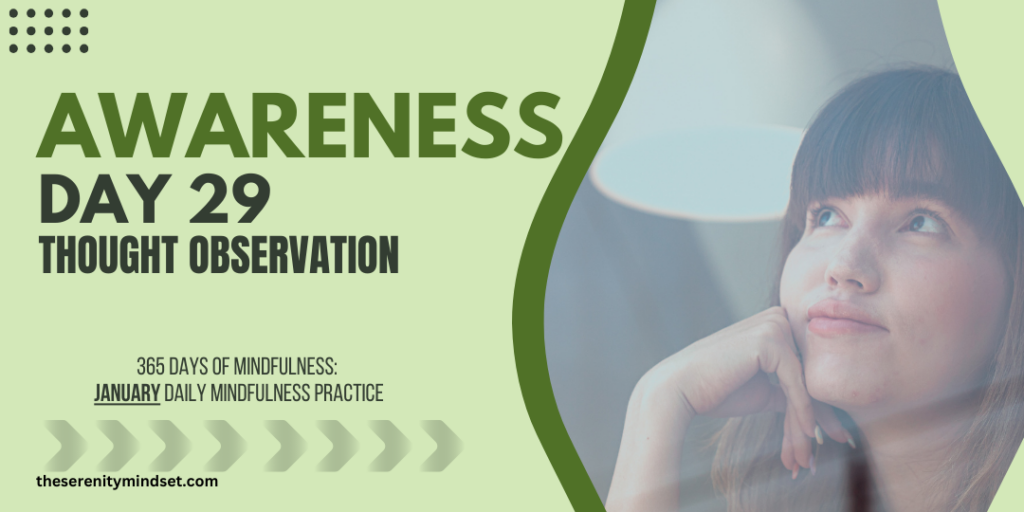
Welcome back, Serenity Seekers! It’s Day 29 of our 365 Days of Mindfulness journey, and today’s mindfulness practice focuses on sitting with your thoughts and letting them come and go without judgment.
This mindfulness practice invites you to observe your thoughts with curiosity and openness, without becoming attached or overwhelmed by them. By practicing thought observation meditation, you can develop a sense of peace and clarity, even amidst a busy mind.
Missed the introduction? Read all about the 365 Days of Mindfulness challenge here.
Related Post: “Daily Mindfulness: The Tiny Habit That Can Transform Your Life!“
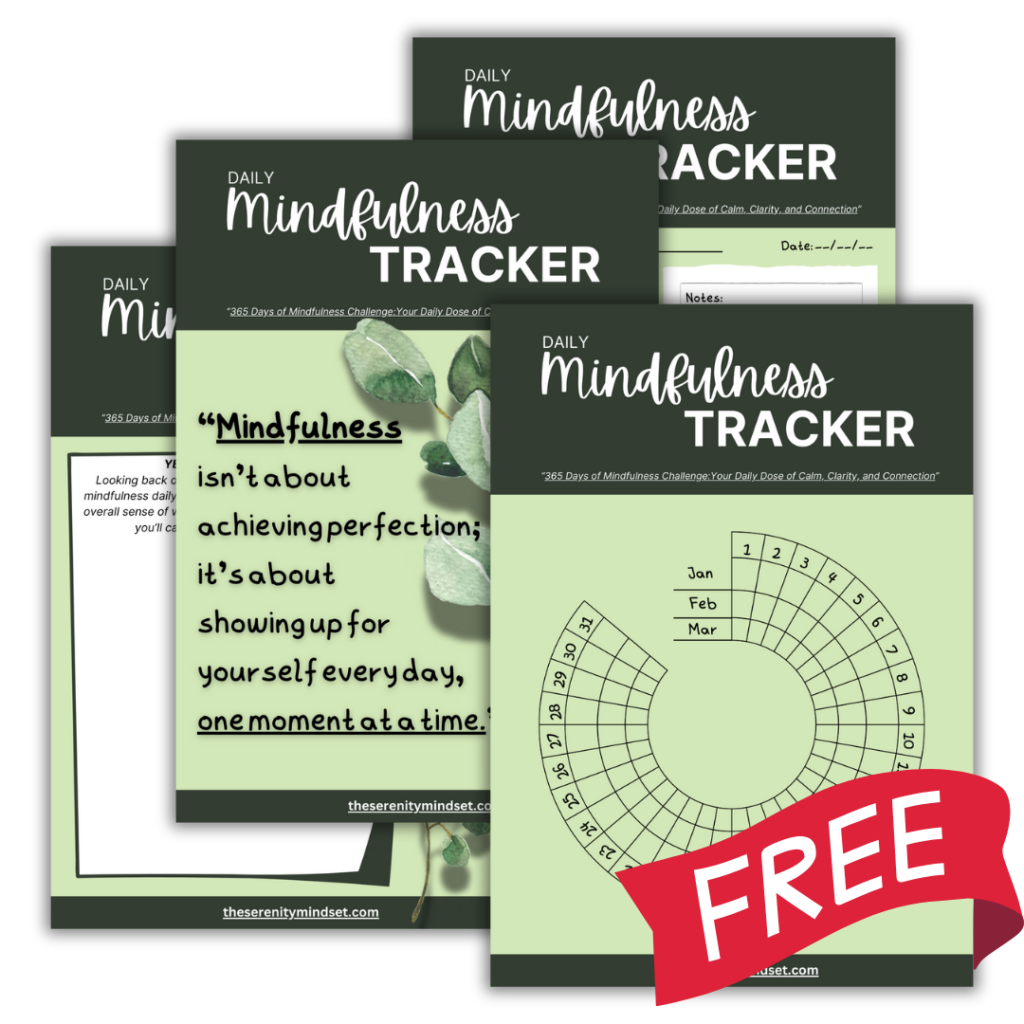
Table of Contents
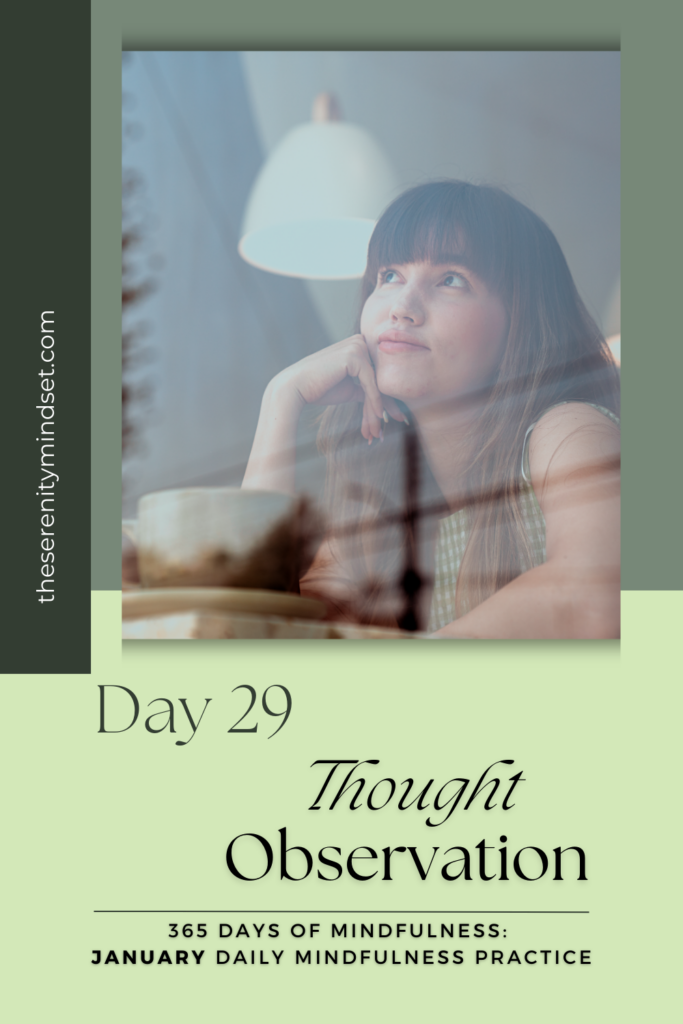
Your Daily Mindfulness Practice:
Day 29 – Thought Observation Meditation
For today’s mindfulness practice, spend 5–10 minutes sitting quietly and observing your thoughts. This exercise helps you become an impartial observer of your mind, allowing thoughts to come and go like passing clouds.
Follow these steps to practice Thought Observation Meditation:
- Find a Quiet Space: Sit in a comfortable position where you won’t be disturbed. You can sit on a chair, cushion, or the floor—whatever feels right for you.
- Settle In: Close your eyes (optional) and take a few deep breaths to center yourself.
- Let Thoughts Arise: Allow your mind to wander naturally. Notice thoughts as they come up, without trying to suppress or control them.
- Label Without Judgment: When a thought arises, mentally label it (e.g., “worry,” “planning,” “memory”). Avoid attaching any emotion or judgment to it.
- Imagine Letting Go: Visualize each thought as a cloud drifting by or a leaf floating down a stream. Watch it pass without holding onto it.
- Redirect Gently: If you find yourself engaging with a thought, gently bring your focus back to the present moment, perhaps by returning to your breath.
- End with Reflection: After your session, take a deep breath and reflect on how it felt to observe your thoughts without judgment.
This mindfulness practice encourages you to step back and view your thoughts with detachment, transforming the act of sitting still into a powerful exercise in self-awareness.
Why Thought Observation Matters
Sitting with your thoughts and letting them come and go is a cornerstone of mindfulness. Here’s why Thought Observation Meditation is an essential part of our 365 Days of Mindfulness journey:
- Reduces Mental Clutter: Observing thoughts without attaching to them helps declutter your mind and reduce overwhelm.
- Cultivates Non-Judgment: This practice encourages you to accept your thoughts as they are, fostering self-compassion.
- Promotes Emotional Regulation: Learning to let thoughts pass can reduce reactivity and enhance emotional balance.
- Deepens Presence: Observing your thoughts connects you to the present moment, grounding you in mindfulness.
This daily mindfulness practice reminds us that we are not our thoughts—we are the observer of our thoughts.
Reflect on Today’s Mindfulness Practice
After completing today’s Thought Observation Meditation, take a moment to reflect:
- What did you notice about your thoughts? Were they fast, slow, repetitive, or varied?
- How did it feel to observe your thoughts without judgment?
- Did this mindfulness practice help you feel more present or detached from mental clutter?
Write down your reflections in your Mindfulness Tracker to deepen your insights and track your progress on this 365 Days of Mindfulness journey.

Recommended Mindfulness Products
Enhance your Thought Observation Meditation with these tools:
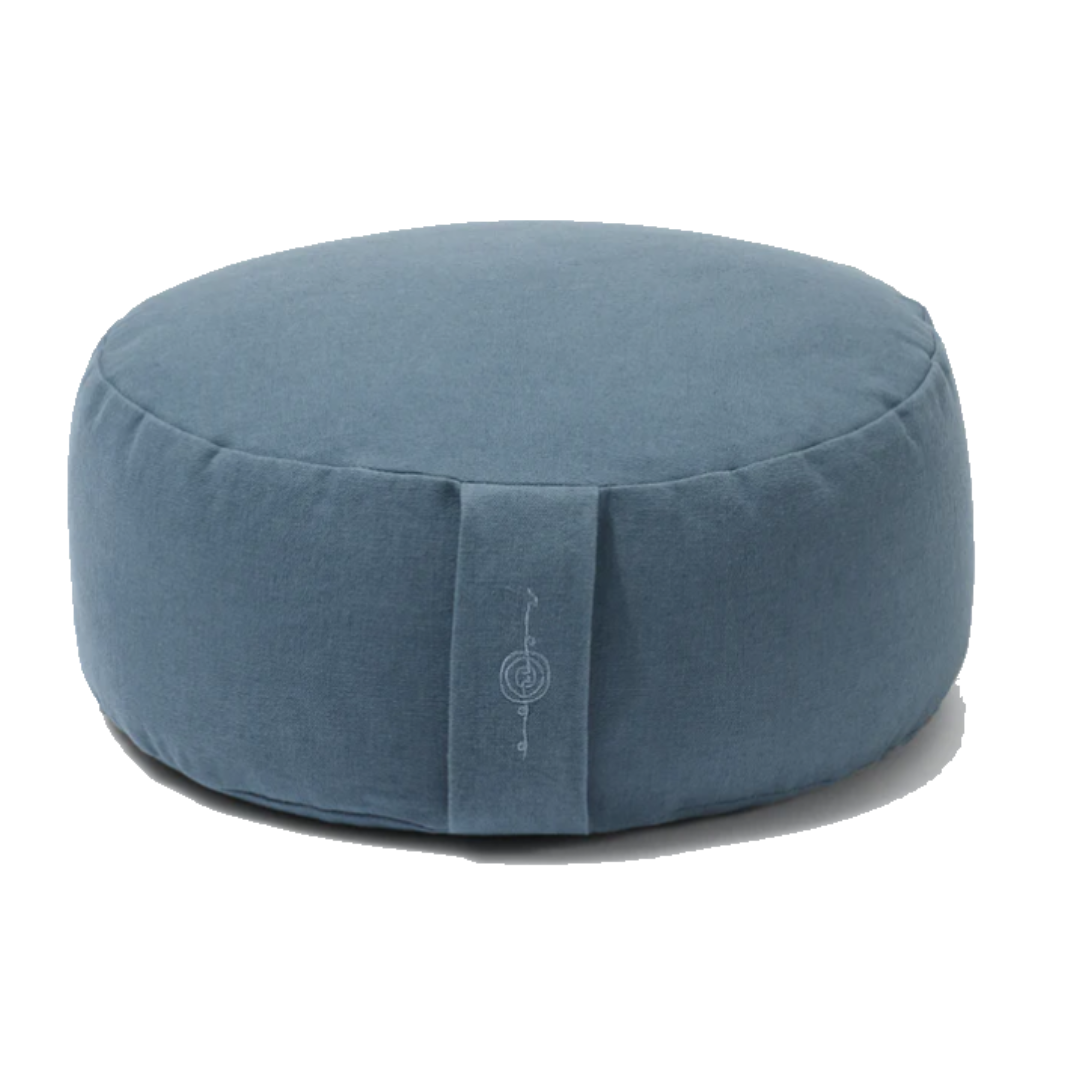
Find a comfortable seat to support your stillness practice.
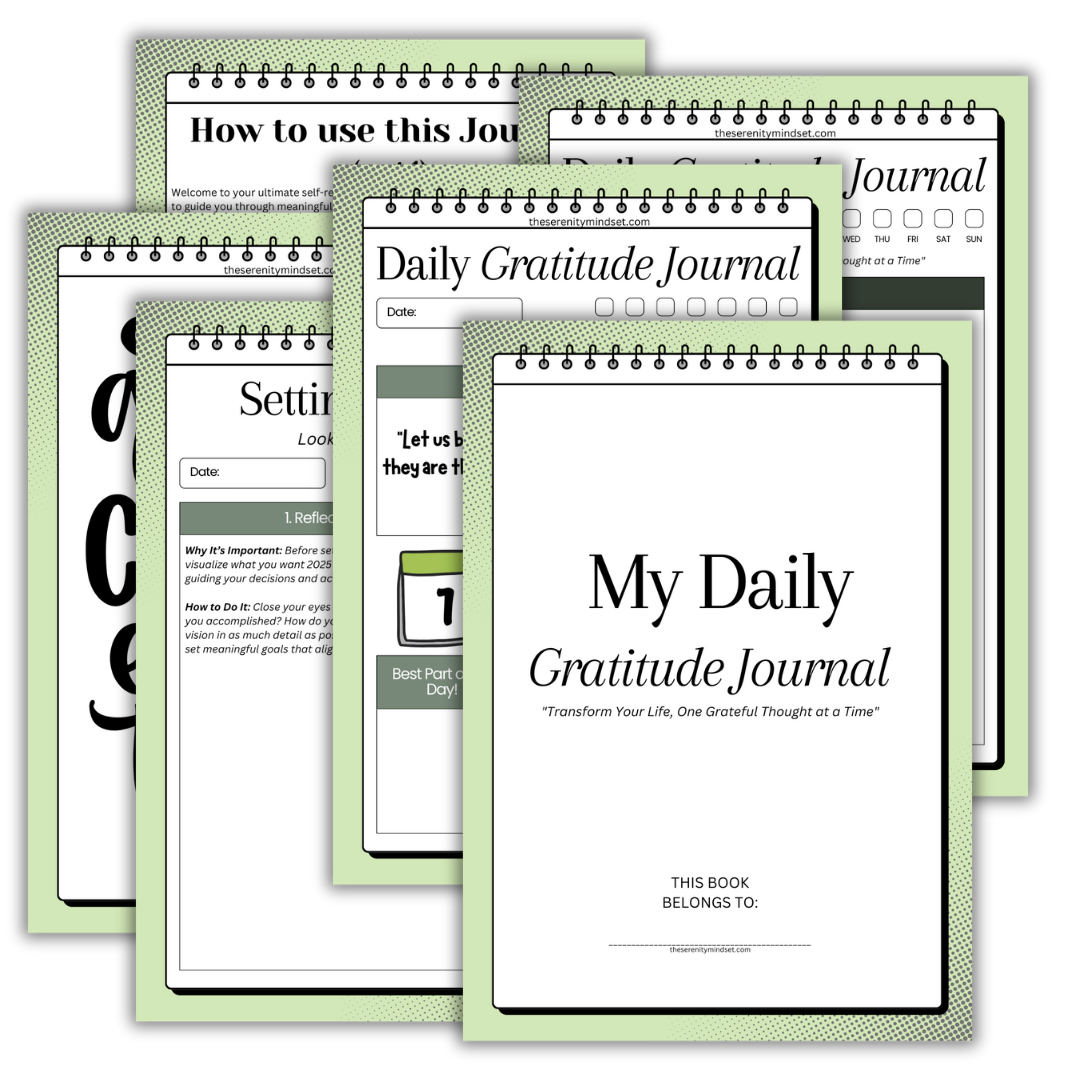
My Daily Gratitude Journal from The Serenity Mindset
Reflect on your thought patterns and insights in this printable journal.

Use calming scents like frankincense to create a serene environment.
Visit our Resources Page for a curated selection of tools to support your mindfulness journey, including meditation aids, journals, and more.
Share Your Journey
How did today’s Thought Observation Meditation resonate with you? Share your reflections on Pinterest, or join us on YouTube @theserenitymindset, where we share daily mindfulness videos and tips. Don’t forget to use the hashtag #SerenitySeekers365 to connect with others on this 365 Days of Mindfulness journey.
If you’re just joining us, catch up on previous days’ practices and download your free Mindfulness Tracker to log your progress and reflections.
Discover additional meditation techniques and mindfulness practices by visiting our Meditation and Mindfulness Section for tips, guides, and inspiration.
Join us tomorrow for Day 30 as we continue exploring mindfulness through meaningful daily practices.

References
- Observing Thoughts Without Judgment – Mindful.org article on the benefits of thought observation for mindfulness.
- Letting Thoughts Pass: The Key to Calm – Psychology Today resource on practicing non-judgmental thought awareness.
- Mindfulness and Emotional Regulation – Research study on how mindfulness improves emotional regulation and reduces mental reactivity.




xc7bll